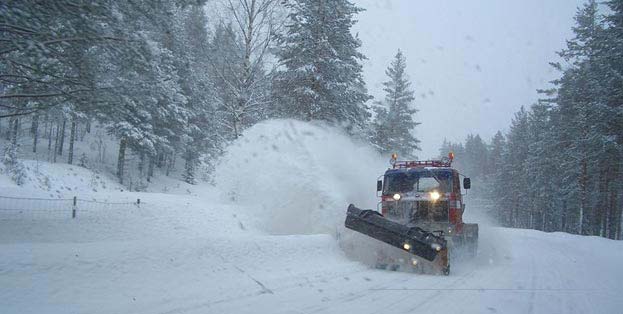
A snowplow clears snow off a winter road, providing safe driving conditions
Safe Driving Throughout the Winter With Our Winter Car Maintenance Tips
If winter is coming, and you don’t want to put any additional strain on your vehicle, be sure to follow this simple checklist. Keeping your car prepped for the burden and strain that constant cold and bad weather can bring will save you money. Bad weather also increases the risk for accidents, so in addition, following this checklist will help to keep you safe.
Some of the procedures listed below can be done at home, if you are both car-savvy and comfortable with the maintenance. Other items will be best suited for a professional mechanic, with professional tools.
Engine Performance
Pay attention to how your engine sounds and behaves. Is it idling correctly – in other words, smoothly and at low RPMs? Does it stall out on you? Does it ever have hard starts, or diminished power? All of these can be indicative of a number of problems, ranging from dirty filters to broken parts. The cold weather can really exacerbate any existing issues, making problems much worse.
Fuel Issues
Moisture can form in your fuel line, and if it freezes, could cause the line to expand and crack. To combat this, keep your tank as full as possible (moisture cannot form if it’s full). You can also pour a bottle of de-icer into your tank once a month.
Oil
Obviously, changing your oil as recommended by your car’s manufacturer is maintenance you will perform all year long. Same goes for your oil filter. But check it constantly to monitor the levels. If you frequently make short trips, or stop-and-go a lot, you should change your oil more often than listed in your manufacturer’s settings (every 3,000 miles).
Cooling Systems
Every other year, you should get your coolant system flushed and refilled. But you also should be monitoring your coolant for level, concentration, and condition. If topping off levels in preparation for winter, an even mix of antifreeze and water is typically recommended, but consult your owner’s manual before adding.
IMPORTANT: Be certain that your engine has cooled before removing the radiator cap.
Windshield Wipers
In most areas, winter means rain, sleet, snow, and ice. If your wiper blades are old, replace them. The summer months may have dried and cracked the blades, which can greatly affect their usefulness. Most blade manufacturers offer rubber-clad blades to help protect against ice buildup. It is also handy to keep windshield washer solvent and an ice scraper in the car.
Heater and Defroster
You probably haven’t used them since last winter, so check to see that they are still in good condition and effective. Most newer cars have cabin air filters that may need replacing. Your owner’s manual should indicate where to look for the cabin filter, and how often it needs replacement.
Battery
Maintenance of a car battery is usually best left to a professional. They have tools to measure the battery’s output, to test if it’s performing weakly. But be on the lookout for any signs of wear or tear that could indicate trouble down the road: corrosion forming at the posts or cable connections, and fluid levels.
IMPORTANT: If you are checking your own battery, avoid contact with any corrosive deposits or battery acid, and always wear safety goggles and rubber gloves.
Lights
Visibility becomes increasingly important in the winter months. Rain, snow, or fog can make it harder to see, and make it hard for others to see you. In addition to that, it gets dark earlier, and that means more time spent night-driving. To keep your lights in shape, clean out any buildup from the lenses, and replace any dim or damaged bulbs. Never use a dry rag to clean, as they could leave scratches that affect visibility.
Exhaust
Checking a car’s exhaust system is best left to a professional. They will raise the car onto a lift and examine the underbelly, looking for any leaks. Prolonged exposure to exhaust fumes from a car can be deadly. In addition, the trunk and floorboards of the car must be examined.
Tires
Even with brand new tires, icy and wet roads can be dangerous, so any baldness or under inflation can be deadly. Once a month, check the tread and pressure of your tire, and rotate and replace as needed. Also be sure to keep your spare tire and jack in good condition, in case of emergency.
With a little preparation, you can give yourself a safety advantage against even the harshest winter.










